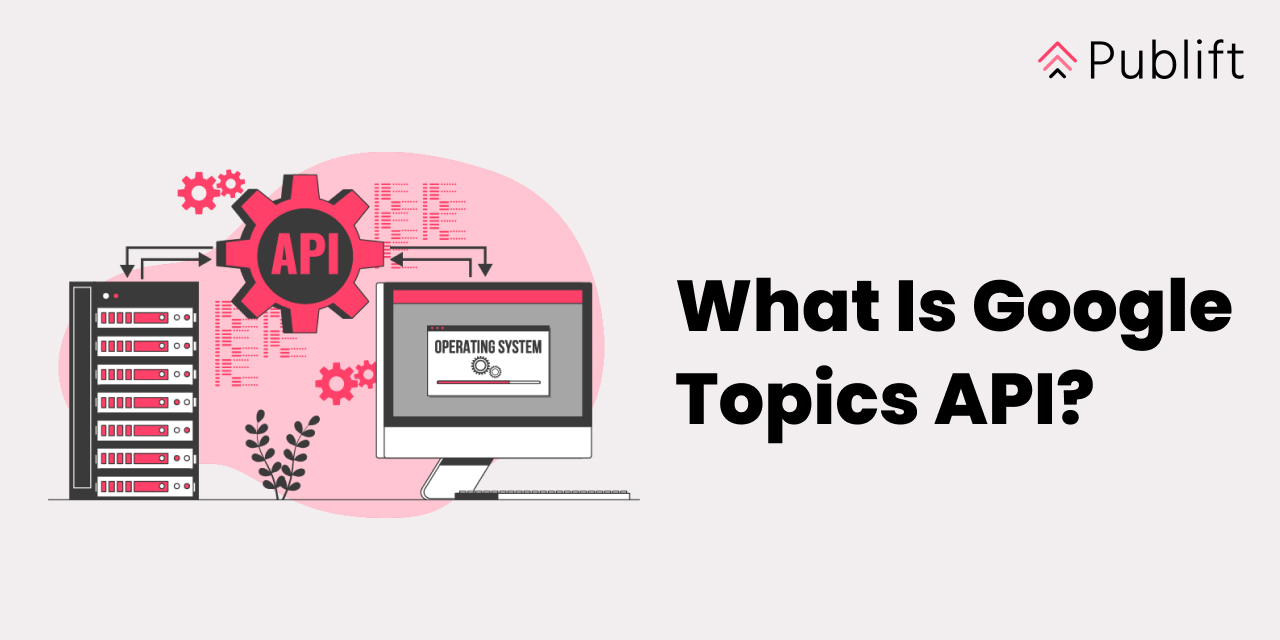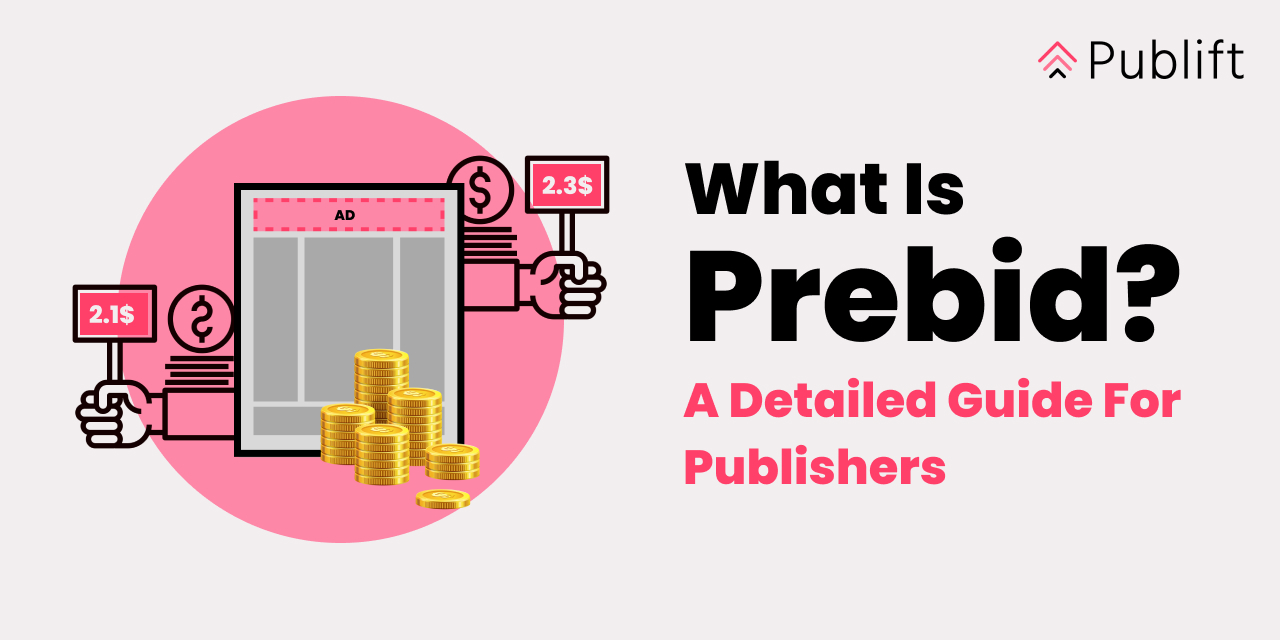The way we handle online privacy is evolving as users become sensitive to how websites and apps track their browsing behavior and store their personally identifiable information (PII).
At the same time, this shift towards stricter data privacy norms has created challenges for publishers and advertisers who relied heavily on third-party cookies to track user behavior and store their data with the aim of showing them more relevant ads.
Google's Privacy Sandbox is an initiative that aims to walk this middle path between maintaining user privacy while delivering more relevant ads.
Let’s dive deeper into what this means for the digital publishing and advertising industries, and how publishers can prepare for the significant changes it is set to usher in.
What Is Google's Privacy Sandbox?
Google's Privacy Sandbox is an initiative by Google aimed at enhancing online privacy by limiting cross-app and cross-site tracking, while keeping online content accessible to all. It aims to do this by eliminating the use of third-party cookies and replacing them with suitable alternatives.
The Privacy Sandbox includes several new technologies, each concerned with addressing a core aspect of the privacy issue. Some of these include:
- Topics API: Enables interest-based advertising without the use of third-party cookies
- IP Protection: Prevents users’ IP addresses from being used for third-party tracking
- Attribution Reporting API: Correlates ads with conversions
Privacy Sandbox will not impact the use of first-party cookies. For the uninitiated, first-party cookies are cookies stored on a user's device by the website they are currently visiting. This allows the website to deliver a better browsing or shopping experience. For a more detailed comparison, you may refer to our detailed guide on first-party vs third-party cookies.
Understanding the Mechanics of Privacy Sandbox
At its heart, the Privacy Sandbox is a set of APIs that process user information in a manner that respects privacy by ensuring that personal data is handled within the user's browser and is not shared with external parties. The key APIs in the privacy sandbox include:
Topics API
Topics API is perhaps the most fundamental change that Privacy Sandbox envisions for the programmatic ecosystem. Until now users were identified using identifiers extracted from the cookies that store their information, and based on their browsing history, relevant ads were shown to them.
With Topics API, browsers will only store the user’s topics of interest rather than their complete browsing history. These topics can then be shared with adtech platforms to show relevant ads. All information is stored locally on the user’s machine, and users have the option of opting out of Topics API at any time and/or deleting their stored information.
Attribution Reporting API
Traditionally, conversion tracking was achieved through the use of third-party cookies so that advertisers could correctly identify the entities involved in the programmatic ecosystem.
With the Privacy Sandbox’s Attribution Reporting API, the browser instead uses two events connected by the API to derive the same conversion insights, but without the use of third-party cookies.
For instance, when a user clicks on an ad on the publisher’s website, this is counted as one event. When a conversion occurs on the advertiser's end, this is counted as a second event. The API connects these two events in a privacy-preserving way to establish conversions, without using any personally identifiable information that may be used to identify a user.
In this process, the API generates two types of reports for analysis:
- Event-level reports that connect a click or view on the publisher’s side with a conversion.
- Summary reports, that are independent of the events that occur on the publisher side, but answer higher-level questions needed by publishers and advertisers such as measuring RoI etc.
Protected Audience API
Protected Audience API ensures that a user’s data never leaves their web browser. Until now, a user’s data could be shared between multiple entities in the programmatic ecosystem such as an ad network or a demand side platform (DSP).
Protected Audience API is particularly relevant for remarketing campaigns where ads need to be shown to users only from the websites they may have previously visited. To achieve this, it allows on-device auctions on the user’s browsers to choose the best ad which should be shown to the user.
Benefits of Privacy Sandbox
Privacy Sandbox was designed to create technologies that would protect user privacy while allowing publishers and advertisers to continue showing relevant ads. Here are some of the benefits publishers can expect from it.
Ethical Audience Targeting
The Privacy Sandbox relies on Topics API and the Protected Audience API to enable interest based advertising (IBA) without the need to track user behavior across sites and apps, or to use third-party cookies. Both these technologies are expected to deliver precise audience targeting while complying with the most stringent data privacy laws the world over.
Improved Performance Measurement
Privacy Sandbox equips publishers with more efficient metrics to measure the performance of digital ads such as Attribution Reporting and Private Aggregation API.
With Attribution Reporting, publishers can correlate ad clicks with conversions and generate event-level summaries. Private Aggregation API, on the other hand, allows publishers to create summary reports with cross-site data.
Reduced Spam
Privacy Sandbox uses Private State Tokens to let websites communicate among themselves about a user’s authenticity without the need for passive tracking. This means that when a user goes from one website to another, websites can communicate with each other about whether a user is a bot or a real human, without the need to track other aspects of the user’s behavior.
This is similar to how cookie syncing worked, with the difference that Private State Tokens would only communicate essential information about a user’s authenticity, and not their online behavior.
Increased Trust
With Privacy Sandbox, there is no cross-site and cross-app tracking, and the user’s information never leaves their browser. This helps build trust among users. This trust improves their overall browsing experience, which is something publishers always strive to achieve.
Challenges for Publishers
While the Privacy Sandbox proposals are expected to emerge as the primary third party cookie alternative, they still have certain limitations that publishers may find challenging to cope with. The Interactive Advertising Bureau (IAB) has highlighted several challenges that the Privacy Sandbox may pose for publishers, including:
Lack of Infrastructure Transparency
Google has not made it clear to publishers what infrastructure in the form of hardware and software will publishers need to invest in to support Privacy Sandbox’s functioning.
Since investing in additional infrastructure means extra costs, this is a major challenge for publishers. There could also be costs involved in learning and reskilling in order to adapt to the seismic shift that the Privacy Sandbox is expected to bring to the programmatic landscape.
Increased Reliance On End User Networks
The Privacy Sandbox envisions a new and more important role for web browsers as a greater number of processes involved in navigating the web occur locally on the user’s device to protect their privacy. This, in turn, can mean that publishers’ advertising revenue could become more dependent on the end users’ network connection.
For instance, the Protected Audience API is designed to move more auctions to the end user’s browser to ensure privacy. However, this would also mean that performance of ads would become even more heavily dependent on a user’s network, impacting publisher revenue.
How Should Publishers Prepare for the Privacy Sandbox?
As the rollout of Google's Privacy Sandbox progresses, there are a few things publishers can do to ensure that they are prepared for the changes . Here’s a practical guide for publishers to prepare for these changes effectively.
- First-Party Data Collection: Publishers should intensify efforts to collect first-party data, which is to say, information that users voluntarily provide directly to the site, such as email addresses or preferences. This can be achieved through subscriptions, newsletters, and registration for premium content. First-party data remains a powerful tool for understanding the audience directly without breaching privacy norms.
- Contextual Advertising: Reinvesting in contextual advertising, where ads are matched to the content of the page rather than the user's previous browsing behavior, can also be a fruitful approach. This method respects user privacy and aligns ads with the content that the user is currently interested in, maintaining relevance without overstepping privacy boundaries.
- Participate in Sandbox Trials: Engage with Google's trials for Privacy Sandbox technologies. Participation will provide firsthand experience and input into how these systems evolve.
- Diversify Revenue Streams: Reduce dependence on ad revenue by exploring alternative monetization methods such as subscriptions, sponsored content, or ecommerce.
- Make Use of Google Resources: Ultimately, Google is the best source to keep track of the Privacy Sandbox initiative. Publishers should constantly monitor Google’s Privacy Sandbox page to see how it is evolving.
Final Thoughts
The Privacy Sandbox initiative aims to protect people’s privacy online, while helping build thriving digital businesses. While its proposals pose challenges to publishers, they also create opportunities to enhance relationships with audiences and diversify revenue streams. Proactive engagement with these new systems will be key to navigating this transition successfully.
For AdSense & GAM publishers looking for a trusted partner to walk them through the uncertain programmatic landscape, Publift offers a suite of tailored solutions that help them maximize their revenue. We have been helping publishers realize an average of 55% increase in ad revenue since 2015.
Get in touch with us today to take your monetization strategy to the next level..
FAQs
How will Privacy Sandbox affect a site's ad revenue?
As third-party cookies in Chrome and other web browsers are phased out, the shift to privacy-focused advertising methods like those in the Privacy Sandbox might lead to less precise ad targeting initially, impacting revenue.
However, as advertisers and publishers adapt to new technologies such as cohort-based targeting, revenue levels could stabilize and even grow by maintaining user trust and aligning with privacy regulations. Since the second half of 2023, Publift has been consistently testing a variety of first party cookie implementations and identity solutions such as Topics API and Protected Audience API. This is to ensure we are able to deliver diverse high-value cookieless inventory solutions which will allow our publishers to achieve their revenue objectives effectively.
How to leverage first-party data in a post-cookie world?
To leverage first-party data, publishers should focus on increasing user engagement to encourage data sharing, such as through personalized content, subscriptions, and newsletters. Using this data for targeted advertising on your own site can improve ad relevance and user experience, potentially boosting ad performance and revenue.
%20(1).png)







.svg)




















.png)
.png)


